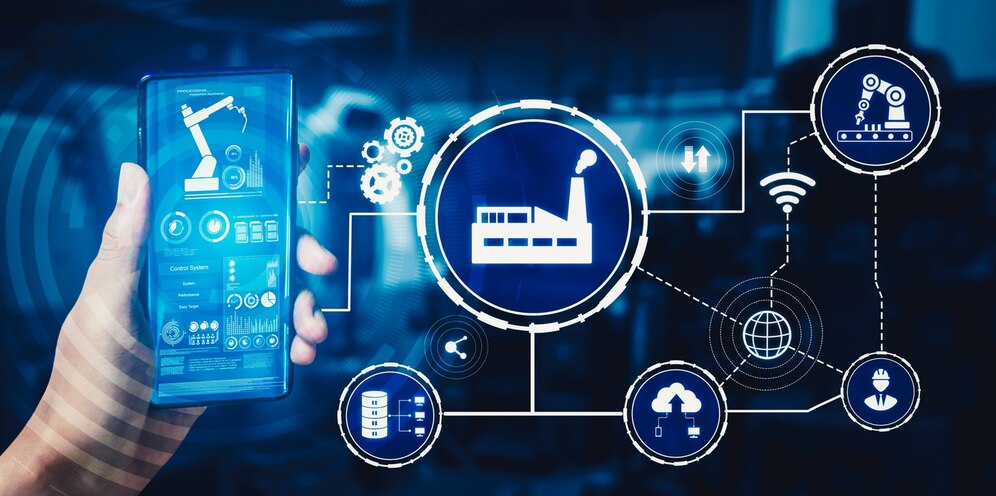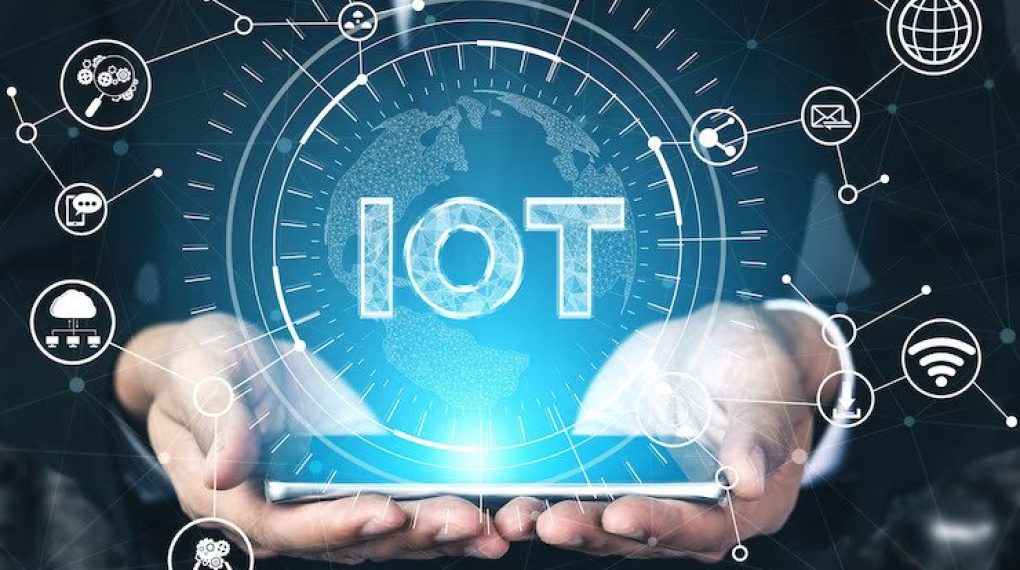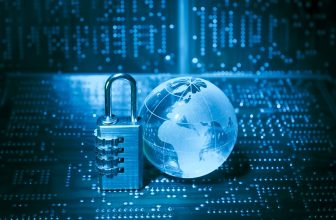
As industries move towards the fourth industrial revolution, or Industry 4.0, cybersecurity becomes a significant factor in adopting Internet of Things (IoT) technology and industrial automation systems.
Industries everywhere are realizing the potential of IIoT and industrial automation systems to increase efficiency, reduce costs, and create new revenue streams. However, these technologies’ security risks must be addressed before they can be safely deployed.
In this article, we’ll examine how cyber threats can impact Industrial IoT (IIoT) and Industry 4.0. We’ll discuss the types of cyber threats and how companies can protect themselves from them. Finally, we’ll look at some strategies that can be used to mitigate the risk posed by cyber threats and ensure a secure Industrial IoT environment.
What are Industrial IoT (IIoT) and Industry 4.0
Industrial IoT, or IIoT, connects internet-enabled industrial devices and software to communicate, monitor, store, and analyze data. It allows companies to be more agile and cost-efficient by automating mundane tasks and allowing greater access to data.
Meanwhile, Industry 4.0 represents a fourth industrial revolution where machines become more autonomous with embedded artificial intelligence (AI) and can talk to each other via digital networks.
It encompasses a broad range of technologies such as additive manufacturing (3D printing), big data analytics, cyber-physical systems (such as robots), virtual or augmented reality (VR/AR), and cloud computing coupled with mobile technology.
The Industrial IoT (IIoT) and Industry 4.0 are revolutionizing how businesses operate, driving unprecedented efficiency, productivity, and innovation levels.
However, as we embrace the benefits of IIoT and Industry 4.0, the importance of implementing robust OT security solutions cannot be overstated. Ensuring the safety and integrity of these complex systems is vital to leveraging their full potential and protecting businesses from ever-evolving cyber threats.
Why Cybersecurity Is Essential for IIoT and Industry 4.0
Cybersecurity is essential for protecting the industrial Internet of Things (IIoT) from cyber threats. IIoT systems are exposed to threats—from malicious actors to nation-state-sponsored hacks. To protect these sensitive systems, organizations need to implement robust cybersecurity measures.
IIoT cybersecurity solutions help organizations protect their industrial operations from unauthorized access and cyberattacks, from authentication and authorization systems to data encryption. Additionally, modern security solutions can quickly detect and respond to cyber threats, reducing the damage caused by an attack.
The same is true for Industry 4.0—integrating information technology with physical production environments through the convergence of intelligent machines, decentralized data management, and cloud-based computing.
Organizations must ensure their systems are secure to take advantage of this digital transformation. Robust cybersecurity measures will help protect companies from malicious cyber attacks while allowing them to reap the rewards of increased automation and improved efficiency that comes with deploying Industry 4.0 initiatives.
Challenges of Securing IIoT Environments

As the number of connected devices in industrial environments increases, so does the risk of security breaches. Numerous obstacles exist to creating a secure environment for IIoT and Industry 4.0.
Legacy Systems
Most industrial systems still use ancient architecture, leaving them vulnerable to attack. These systems are isolated from corporate networks but are still exposed to external threats. Additionally, they may need the latest security protocols or limited protection capabilities.
Complex Environments
Industrial environments typically contain a variety of different systems and infrastructure types, such as Automation Control Systems (ACS), Programmable Logic Controllers (PLCs), Human Machine Interfaces (HMIs), and Industrial Data Historians (IDHs). These systems often communicate with each other over various protocols and networks, which increases the complexity of securing the environment.
Additionally, many IoT devices must have built-in security features or employ only basic security measures that can be easily bypassed. Furthermore, a lack of standardization across platforms can make it challenging to implement industry-wide security measures.
Lack of Visibility
It is often difficult to detect when a system has been compromised due to a lack of visibility into the state of IoT devices and networks. Additionally, there is often limited access to logs or audit trails that can be used to identify potential threats or suspicious activity on critical infrastructure systems.
This lack of visibility makes it difficult for operators to identify and react quickly to potential network threats or vulnerabilities. It also means that organizations do not have an accurate picture of their security posture at any given time and may not be aware of their systems.
Strategies for Securing IoT Environments
Given the rapid rise of the IIoT and strong connections to Industry 4.0, implementing robust cybersecurity measures to mitigate potential risks is essential. With that in mind, several strategic approaches can be taken to help ensure IIoT environments remain secure:
- Security-by-Design: One of the most effective ways to ensure IIoT safety is by building security into all aspects of the system’s design, from hardware and software updates to authentication protocols and access management.
This comprehensive approach can give organizations confidence that their systems are equipped with the necessary tools and capabilities to face potential threats, helping them remain proactive rather than reactive against cyberattacks.
- Data Monitoring: Real-time data monitoring technologies can detect anomalies or suspicious activity within the system and across connected networks. By collecting and analyzing data from multiple sources, organizations can gain greater visibility into their security landscape, allowing them to address any potential issues quickly and efficiently.
- Encryption: Implementing encryption best practices should also be a priority regarding IIoT security. By encrypting data at all points throughout its life cycle, from storage through transmission over networks, organizations can ensure that only authorized users have access to sensitive information.
By deploying these strategies alongside other traditional cybersecurity approaches, organizations can increase their confidence that their IIoT environments are secure and protected against malicious actors.
Regulations and Standards Addressing Cybersecurity in Industry 4.0
The industry’s most reputable players recognize the need for robust cyber security measures to defend against cyber threats effectively. That’s why regulations and standards are being implemented to help protect industrial systems, data, and processes.
These regulations and standards guard against external threats and help establish uniform security protocols across industries that can be consistently monitored. Specific measures include:
- Access control: limiting access to specific users or groups of users;
- Authentication: verifying the identity of the user;
- Security monitoring: providing real-time visibility into system performance; and
- Encryption: protecting sensitive data by scrambling it so that only an authorized user can read it.
The International Organization for Standardization (ISO) has also established specific security protocols that must be adhered to when creating or implementing IIoT solutions to ensure a secure platform for industrial data networks, like ISO 27000-27018.
Implementing these standards helps reduce vulnerabilities within Industrial IoT systems, making them more secure from external threats such as cyberattacks or industrial espionage.
What Lies Ahead for Industrial Cybersecurity

It’s safe to say that the future of industrial cybersecurity looks bright, and governments worldwide are taking steps to ensure this remains true.
The demand for security is only increasing, with new threats posed by the ever-evolving cyber landscape. But what do these steps entail?
International Standards
Governments encourage organizations to adopt more stringent international standards, such as IEC 62443. This standard provides a unified set of security requirements for industries relying on Industrial IoT (IIoT) and Industry 4.0 technologies.
It also guides how organizations can secure their networks, assets, and operations from external threats while providing robust user authentication measures.
Government Regulations
Governments worldwide are enacting legislation known as the General Data Protection Regulation (GDPR), which sets out new rules for companies to protect consumer data. GDPR is particularly important in industries relying heavily on IIoT and Industry 4.0 technologies, where consumer safety could be compromised if their data is not adequately protected.
Governments are also investing in cyber defense initiatives, such as integrating advanced analytics technologies into established systems or providing guidance on best practices for businesses related to IIoT and Industry 4.0 security.
These initiatives will help organizations stay one step ahead of emerging threats to minimize customer disruption and maintain trust in their products and services.
Conclusion
In conclusion, cybersecurity is critical to the Industrial Internet of Things and Industry 4.0. Organizations can protect their IIoT systems from cyberattacks and potential losses with adequate security measures.
Security systems must be constantly updated and monitored to ensure the safety and confidentiality of data and processes. To this end, many organizations are beginning to invest in advanced cybersecurity products, services, and training to ensure that their IIoT systems remain safe and secure.
Read Also:






